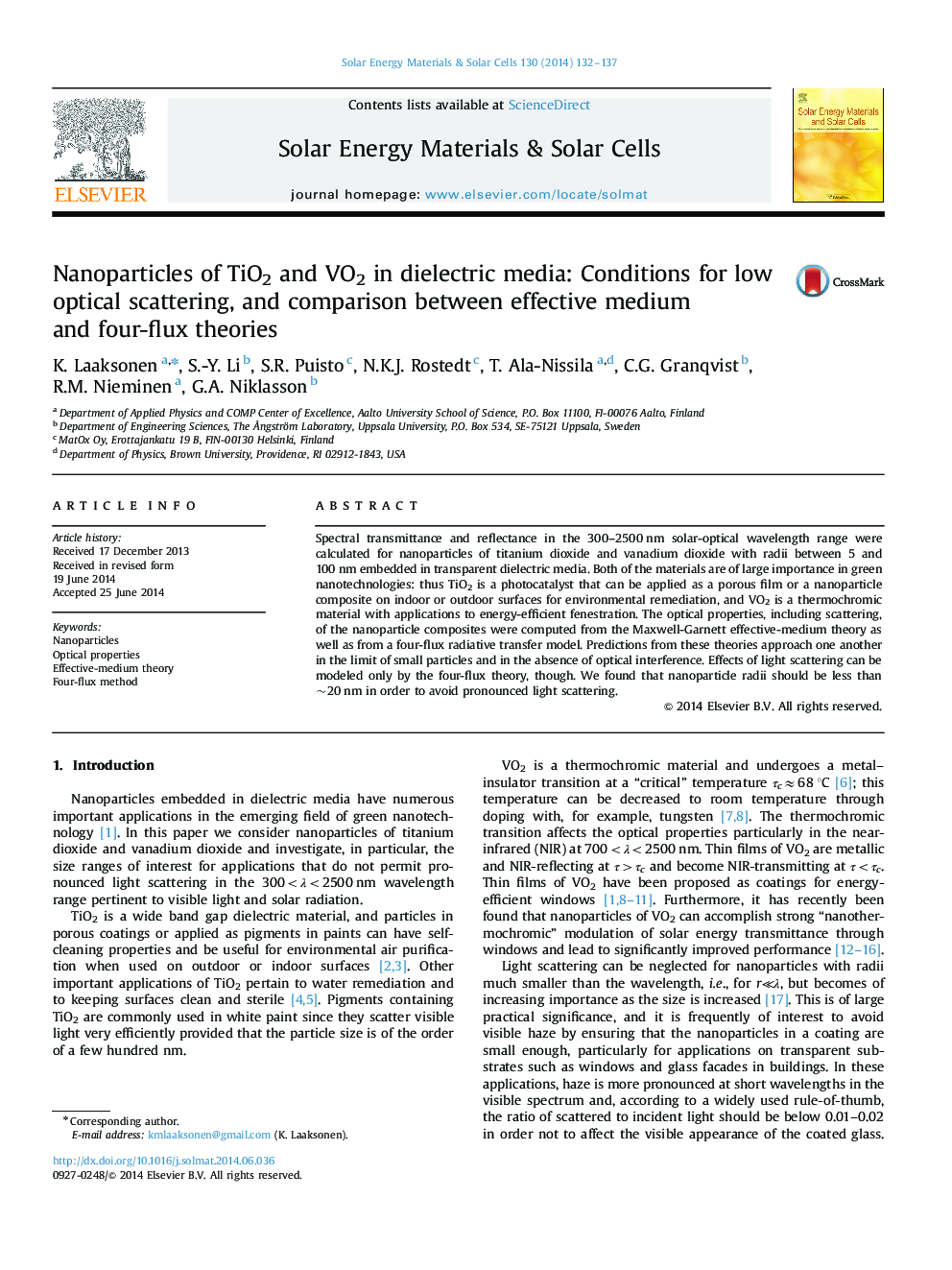| Article ID | Journal | Published Year | Pages | File Type |
|---|---|---|---|---|
| 6535528 | Solar Energy Materials and Solar Cells | 2014 | 6 Pages |
Abstract
Spectral transmittance and reflectance in the 300-2500Â nm solar-optical wavelength range were calculated for nanoparticles of titanium dioxide and vanadium dioxide with radii between 5 and 100Â nm embedded in transparent dielectric media. Both of the materials are of large importance in green nanotechnologies: thus TiO2 is a photocatalyst that can be applied as a porous film or a nanoparticle composite on indoor or outdoor surfaces for environmental remediation, and VO2 is a thermochromic material with applications to energy-efficient fenestration. The optical properties, including scattering, of the nanoparticle composites were computed from the Maxwell-Garnett effective-medium theory as well as from a four-flux radiative transfer model. Predictions from these theories approach one another in the limit of small particles and in the absence of optical interference. Effects of light scattering can be modeled only by the four-flux theory, though. We found that nanoparticle radii should be less than ~20Â nm in order to avoid pronounced light scattering.
Related Topics
Physical Sciences and Engineering
Chemical Engineering
Catalysis
Authors
K. Laaksonen, S.-Y. Li, S.R. Puisto, N.K.J. Rostedt, T. Ala-Nissila, C.G. Granqvist, R.M. Nieminen, G.A. Niklasson,
